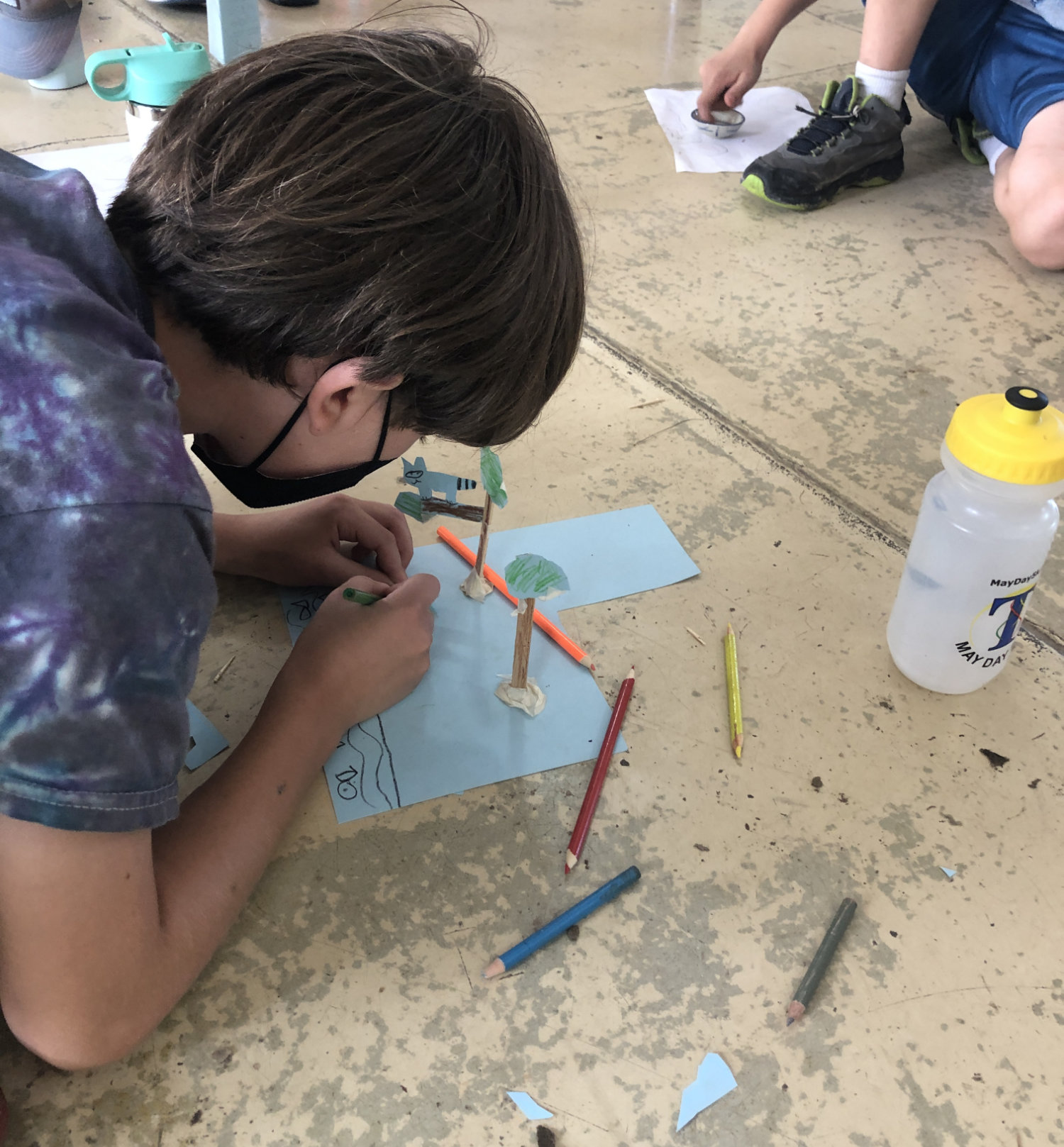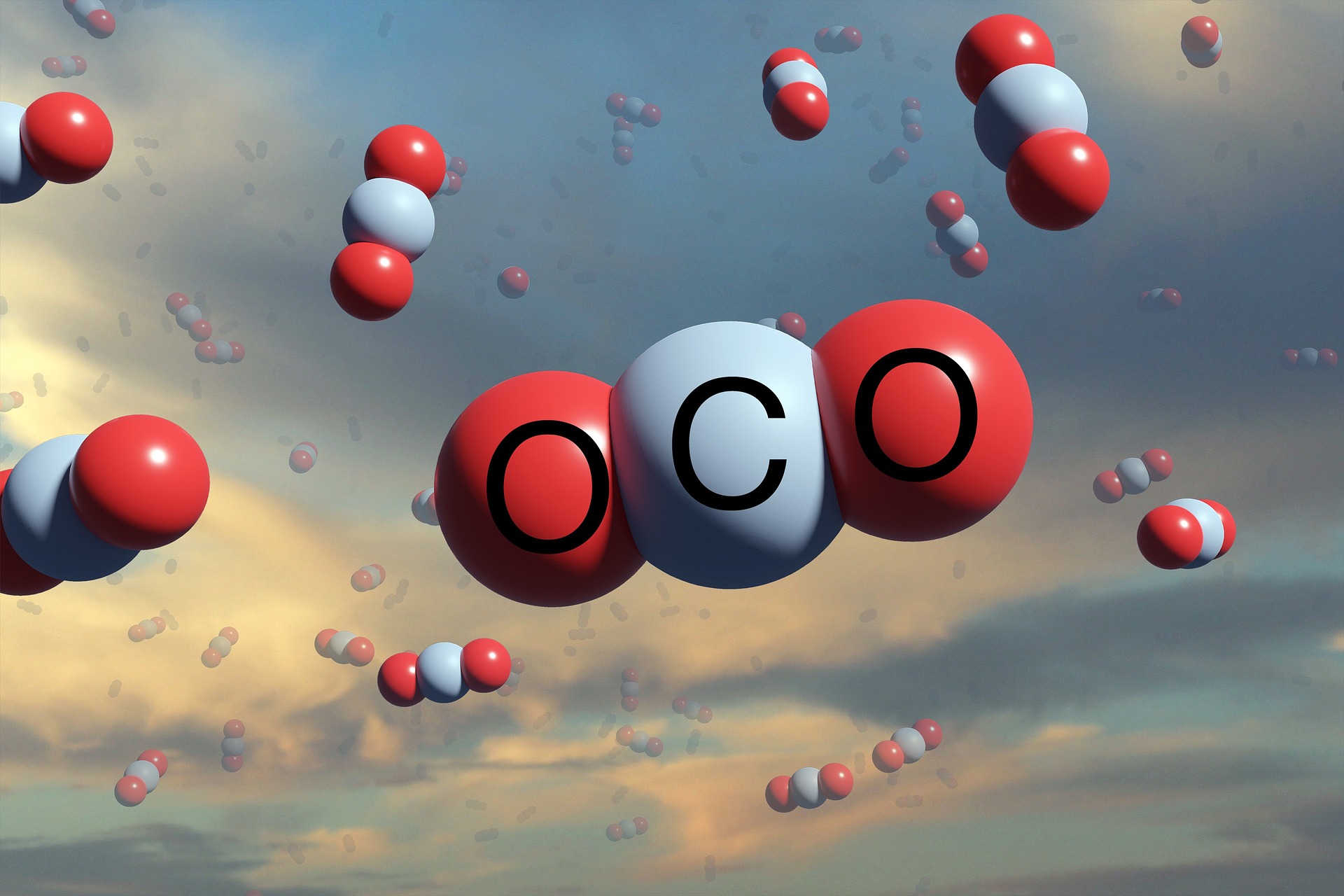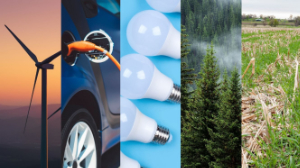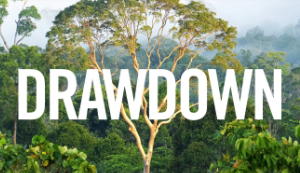Overview
Imagine our communities in the future,10, 30, or 50 years from now. Suppose we had done things between now and that future point in time to slow down or even stop heating up the Earth. How would our communities be different? What would they look like, and how would people be living their lives? And how did we achieve this? Children excel at using their imagination, and they can use art to express their visions of a better climate future.
This activity was inspired by the City of Ithaca, NY's 1000 Conversations project.
Introduction
Students use art to express their vision of what a better climate future could look like in their community, and how we could achieve this.
Grade Level
K-5, 6-8, 9-12
Learning Objectives
Students will
- communicate about climate goals and actions through art
- build fine motor skills by using art materials
Lesson Format
This activity is best done indoors. If desired, students could go outside to gather natural materials (leaves, pine cones, rocks, etc.) for their projects.
Time Required
45 minutes
Standards
NGSS
Communicate solutions that will reduce the impact of humans on the land, water, air, and/or other living things in the local environment. K-ESS3-3
- Anchor Standard 6: Convey meaning through the presentation of artistic work
- Anchor Standard 10: Synthesize and relate knowledge and personal experiences to make art
- Anchor Standard 11: Relate artistic ideas and works with societal, cultural, and historical context to deepen understanding
Credits & Contact Info
Dr. Ingrid Zabel
Paleontological Research Institution, 1259 Trumansburg Rd., Ithaca NY 14850
zabel@priweb.org
Instructions & Materials
Materials
- Age-appropriate art materials for 2- and 3-dimensional activities such as drawing, painting, cutting, taping, etc. It would be ideal to include reusable materials that might otherwise be discarded.
- Suggestions:
- paper, including scrap paper
- colored pencils and/or crayons
- paint
- scissors
- tape
- glue
- string
- yarn
- toilet paper tubes
- bottle caps

Instructions
You could start this activity with a discussion, and ask the students to talk about the things that they like in their communities. What is it about your community that makes it a good place to live?
After listening to the responses and acknowledging that there are a lot of good things about where we live, you could then ask students to think about how their community could be even better. Suggest for them to think about this in a lot of different ways, but especially in ways that would help improve the environment for people and for other living things, and that would help stop our climate from changing.
Here you might want to give a little bit of background about the fact that the climate is changing because of human actions (mostly from burning fossil fuels), and many of those climate changes such as extreme weather are causing harm to people, animals and plants, buildings, businesses, and communities.
Now give the students this prompt: imagine that it is 10 or 20 years from now and we've made some changes in our community to make it better. Ask: what is your vision of how our community looks in the future, and what it's like to live here?
It may be helpful to give examples of positive changes. Some examples might be:
- Now we use more renewable energy instead of fossil fuels
- We can now bike and walk more easily and safely to get around, because people built new paths for these purposes
- We have better ways to heat our homes that don't involve burning gas, oil, or coal. For example, heat pumps.
- When people built new homes they made sure to cut down as few trees as possible, to preserve habitat for wildlife. And they made sure that wildlife habitats remained connected to each other, so animals could move around freely.
- We shut down coal-fired power plants near where people live, and we saw a lot less asthma and other respiratory illnesses
- We figured out ways to waste less food
- We started thinking about land more as something to take care of than something to be used
- Electric vehicles are a lot more affordable than they used to be, so most people can afford one
- We planted trees in our neighborhoods to soak up rainwater during a storm and to give us shade to keep us cool
- We built rain gardens near streets and parking lots, to soak up rainwater so now we don’t get as much flooding
- We got ourselves ready to help in emergencies – we made plans. For example, on really hot days, people who have air conditioning in their homes made plans to check on their neighbors who didn’t have air conditioning, and invite them over for the afternoon.
- For people who live in low lying areas that flooded so often that their homes were damaged, we built new homes for them in safer areas.
You could help students by telling them a story of your own - your vision of a better climate future. Here's one example.
It's 20 years into the future, and when I look out my window I see a bus go by. Then 10 minutes later another bus goes by. In the past, there used to be a bus line here but it only came once an hour. Now the bus comes really often, and it makes it so easy and convenient for me to get on board and get around my town. The whole bus system is a lot better connected than it used to be, so it's really easy for me if I need to transfer to a different bus to get to work or to shopping. It's so convenient that I really don't need to drive a car much anymore, and in fact I've given up my car. A lot of people have stopped using their cars, and that's led to a lot less pollution of many kinds. Giving up my car means that I don't have to pay for the car anymore, or the car insurance, which can be really expensive. I've saved a lot of money. If there are times that I do need a car I can use one through a car share program. I really like the ease and the freedom of living this way.
You can have the students discuss their ideas, or you can move right into the activity, which is to create a piece of art to show their vision.
After students have finished their projects, it’s ideal to have a show-and-tell where students can show their piece of art and describe what they are trying to convey. Alternatively, you could have them write a description of their project.
Background & Extensions
Climate Action
There's no one perfect solution to climate change, and we need many different actions to reduce the harmful effects of industry-led planetary warming. This means that this activity gives students opportunities for considering many different solutions.
Solutions for mitigating climate change fall largely into these categories:
- Energy efficiency and conservation: finding ways to use less energy
- Decarbonizing our energy systems: generating electricity using low-carbon sources like solar and wind energy, hydropower, nuclear energy, and geothermal power production
- Electrification: with decarbonized electricity, switching to electric vehicles, building heating systems, and appliances
- Waste management: reducing greenhouse gas emissions by being smarter in how we manage waste, and reducing waste overall by consuming less
- Diet: eating a higher proportion of plant-based foods rather than animal-based, to cut down on the high greenhouse gas emissions from animal-based food production
- Land care: changing our agricultural and forestry practices to reduce carbon loss and increase carbon uptake in soils and plants
Another important response to climate change is adaptation: learning to live with the changes that are already happening, and will continue to happen because of the greenhouse gases we've already emitted into the atmosphere. Communities need to find ways to become more resilient to climate hazards that we are facing.
Learn more about climate change adaptation in the chapter Climate Change Adaptation from The Teacher-Friendly Guide to Climate Change, on PRI's Digital Encyclopedia of Earth Science.
Finally, we need to find ways to remove carbon dioxide from the atmosphere. These methods could be nature-based, such as by conserving and regenerating forests, or technological.
Learn more about climate change mitigation with these resources:








